Regardless whether you are one of us hard working homeowners locked into paying high prices to a lawn service company to make your lawn beautiful, or the hands on DIY type that feels better taking charge of the lawn work yourself. There is one thing I believe we will all agree. Maintaining a beautiful lawn has its challenges to say the least. The frustrating thing for the DIY minded among us

Learn 7 Basic Steps to a Beautiful Lawn the Professionals use to Make Money
by teddletonmr
Having a beautiful lawn is easy when you learn the 7 basic steps professional landscapers use to make money revealed in this article.
A Beautiful Lawn Every Time
. There are many carefully guarded secrets the lawn care professionals know and use to their advantage. For instance knowing exactly what to do when to do it, and let us not forget, exactly how to get it done properly the first time. How would you like to know the secrets professional lawn care companies use to make lots of money? All righty then, get ready to be informed. As you continue reading you will absolutely Learn 7 Basic Steps to a Beautiful Lawn, the professionals use to make money.
Step One Dethatching
Dethatching a lawn, first thing we should understand. Thatch is a layer of lawn debris that will not easily break down and decompose releasing nutrients into our lawn soil. Consisting of small twigs, leaf litter, and other bits of fibrous plant materials, too much thatch will cause lawn health problems.
Over time, a thatch barrier builds up on the surface of the lawns soil. This thatch barrier prevents new grass seed from establishing a healthy root structure, harbors molds and other lawn diseases. A thatch barrier also prevents sustaining a healthy oxygen levels in the lawns topsoil, needed by grass plants to promote healthy root structures growing into nutrient rich organic soil.
When the thatch barrier exceeds three quarters of an inch, or 19mm deep, dethatching the lawn is required.
When working in small yards, dethatch the lawn grass with a long handled hand powered dethatching rake designed for small patches of lawn grass.
Time and Money Saving Electric Lawn Dethatcher is Here
 | Greenworks 27022 14-Inch 10 Amp Electric Dethatcher Dethatching your lawn when the time is right is important. Save money on your lawn care cost, have a beautiful lawn, and reward yourself with this high quality electric lawn thatch problem solver.... Only $113.24 |
Large lawns will require the use of a gas-powered dethatching machine to aid in the removal of the thatch barrier. These machines, dethatcher or power rakes, are quite expensive machines to buy, that require a lot of maintenance. However they are easily rented or hired at a local rental or hire centers for around $75 U.S or so a day.
*** One important word of caution, only dethatch a lawn when the soil is dry. Dethatching a lawn when it is soaking wet will absolutely harm the grass plants root structures, potentially killing the grass plants.
Step Two Aeration
Aerating a lawn, one of the easiest to remedy causes of an ugly unhealthy lawn is soil compaction. In certain regions of the country, there are soil types that contain high amounts of clay, and with heavy clay soil types. Serious compaction problems often occur.
The best way to control soil compaction in the lawn, simply aerate the lawn every two to five years. Two years in areas, that receives heavy traffic. Foot traffic, kid’s playing, and occasional vehicle traffic, all these activities significantly compacts the soil and stresses grass plants. This by the way is a very bad thing for growing a beautiful lawn.
There are several products sold today from which supposedly aerate a lawn. The thing we must keep in mind, simply poking a sharp metal spike into soil with high clay content, will only serve to compact the heavy clay soil.
What we should use instead is a core-aerator that pulls plugs of compacted soil, or AKA cores, out of the lawn, this reduces the preexisting compaction problem.
Aerating a small lawn, it is simpler to use a long handled manual core aerator, remember to keep in mind when aerating the lawn. The best time to aerate a lawn, unlike dethatching, is as soon as is possible after a good soaking rain, or deep watering before the soil dry’s.
The lawn soil is soft when good and damp making it a lot easier to pull plugs of soil from the lawn.
Homeowners and DIYres aerating a large lawn there are two options available we should use. First, rent or hire one of those gas-powered core aerator machines. These types of lawn maintenance machines operate much the same as a walk behind lawn mower. The second easy to option in large lawns, rent, hire or buy a tow aerator, pulling the aerator behind your riding lawn mower, ATV or golf cart will save a lot of walking.
When aerating the lawn Go Slow, this will give the aerator spoons time to penetrate compacted soil and pull plugs AKA cores.
Also take the time to make several passes with the aerator across the lawn, the first pass should be the same as if you were mowing the grass, the second pass, should be ninety degrees of the first pass, while the third and final pass should be forty-five degrees of the first pass.
Be prepared, the lawn will look like a pack of small dogs pooped all over the lawn. That is ok, the little turd like pieces of sod will break down the first time it rains or you cut the grass. The thing we should concern ourselves with, pulling plugs out of the turf every four to six inches apart, and a couple of inches deep to aerify the soil properly.
The Yard Butler Lawn Aerator Pulls Plugs
 | Yard Butler D-6C Core Lawn Aerator Pulling plugs out of compacted clay lawn soil is the best way to improve the health of our lawn grass ensuring a beautiful lawn. The yard butler core aerator is the best lawn and garden tool a homeowner and landscape professional will use .... |
Step three Seeding the lawn
Over seeding or reseeding a lawn, the best time of year to Overseed or reseed lawns is late August and early September. With the intense sunshine and stifling heat behind us, the weather conditions could not be better for planting grass seed. Milder days of late summer and early fall, make it a great time to reseed a lawn. The soil temperature is still well above fifty degrees, which is required for grass seed to germinate, establishing a healthy root structure critical for the uptake of nutrients and life sustaining moisture.
Let us review the first 3 basic steps to a beautiful lawn. Step 1, dethatch, step 2, aerate, step 3, over seed or reseed the lawn.
Why you should core areate your lawn
The gardeners and landscapers best tow behind and hand push Poly lawn roller & garden cart
 |  |  |
| Brinly-Hardy Poly Lawn Roller - 690 L... Only $169.99 | Brinly-Hardy Poly Roller - 18in. x 24... Only $165.0 | Tricam FR110-2 Farm & Ranch 400-Pound... |
Step four Use Compost
Adding Organic compost, compost is not just for using in the vegetable or flower gardens, a lawn also enjoys the many benefits of a good organic compost feeding. As part of any over seeding or reseeding application, spreading a thin layer of compost say three eights inch deep helps a couple ways.
First, consider using a good organic compost as a top dressing as part of the re-seeding process, this improves the soil to grass seed contact, just so you know, good seed to soil contact increases seed germination exponentially.
Organic compost not only provides nutritional value to a lawn it also improves the absorption and retention of moisture in a lawn soil. You see good organic compost helps to reduce soil compaction. This in turn improves drought tolerance important for lawn survival during the long hot dry days of summer.
Applying compost to a lawn is easier than you might think. First thing we need do is to buy several bags of high quality organic compost. Any local farm store or gardening supply center should have what you need.
The best way to apply compost to a small lawn and around planting beds is quite simply, by hand. Start by opening two or three bags of compost into a wheelbarrow. Next using a fork or garden rake break the compost into small easy to broadcast bits of nutrient rich soil goodness.
Using your bare hands or shovel broadcast small amounts of compost evenly across the lawn; Take care not to put too much compost over one area of the lawn, three eights of an inch deep is plenty.
Spreading too much organic compost across the lawn is not a good thing for the grass plants. too much compost will smother and stress the grass plants, and in the worst case the grass may die altogether.
It is easier to level a thin layer of compost after applying it to a lawn, using a long handled landscape rake with an extra wide set of teeth will save time and do a great job. Simply drag the rake across the surface of the lawn, taking care to overlap each pass. A large push broom will also do the job when a landscape rake is not available however; using a broom is a bit more work.
The final step to the composting is using a lawn roller to smooth out the bumps and improve seed soil contact. It is important to remember, only use one of the lawn rollers that you fill with water, only do not fill it. Make sure the lawn roller is completely empty to cut down on weight.
Recycle and Compost all your lawn clippings, leaves and garden waste material
Compost tumbler and worm farm make great composters homeowners will enjoy using in their lawns and gardens
 |  |  |
| Tierra Garden 9491 115-Gallon Compost... Only $142.46 | Tierra Garden 50-1500 Haxnicks Roll-M... Only $36.27 | Good Ideas CW-ECOS Compost Wizard Eco... Only $50.50 |
Step five Weed Killers
Using weed killers and herbicides, the trick is knowing what to use when for the best weed control. For instance, a good Pre-emergent weedkiller, the best time to apply pre-emergent weedkillers is around either March 15 or September 15 for the best results.
Pre-emergent weed killers work by killing plant seeds, grass, weeds flower and vegetable seeds before they get the chance to germinate, in so doing removing any possibility of the weed taking root before it has a chance to grow.
Pre-emergent weed killers only work for a limited amount of time.
Pre-emergent weed killers will not kill a weed after it has started to grow.
On or a few days before or after March 15 is best. This is before the spring growing season, which makes the pre-emergent herbicides most effective. The thing is, before weed seeds can germinate, the soil temperature must be above fifty degrees F. Rising soil temperatures send a signal to the weed seeds that have been lying dormant, over the winter months, it is time to germinate and grow.
Pre-emergent weed killers basically kill the weed seeds, kill the seeds and there cannot be any weeds.
Weed plants produce their seeds in late summer and early fall and scatter them on the November winds, where they await spring. September 15 is the target date most effective for weed control in preparation for the spring growing season. However, do not use a pre-emergent weed killer when reseeding your lawn. The pre-emergent really works well to kill freshly planted grass seeds, and that I believe we all agree is a bad thing.
Get rid of nasty weeds and poison ivy with Lawn & Garden weed killers
Using a 3 in 1 mulching, bagging, and side discharge lawn mower makes cutting grass, mulching & bagging leaves easy
 |
| BLACK+DECKER 3-in-1 Lawn Mower, String Trimmer and Edger,... |
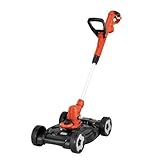 |
| BLACK+DECKER 3-in-1 String Trimmer/Edger & Lawn Mower, 6.... |
 |
| Sun Joe iON16LM 40-Volt 16-Inch Brushless Cordless Lawn M... |
Step six cutting the grass
Cut the grass correctly, the best time to cut your grass is when it is dry, that is not always possible, I know but it is still the best time to cut the grass. Make sure your lawn mower has a “sharp” blade before you mow the lawn. Dull blades tear the blades of grass rather than cut them.
Tearing the grass stresses the plants and they will turn yellow or brown on the tips that were torn.
Cutting the grass with a “sharp” mower blade actually stimulates new growth, making the grass plants look better, most importantly healthier.
Keep in mind; cut no more than one third of the height of the grass plants each mowing. Cutting more than one third of the grass plant each mowing will stress the grass plants and cause problems later in the growing season.
Step seven lawn fertilizers
The best time to fertilize the lawn, spring is the beginning of the growing season for our lawn. However, before jumping the gun and fertilizing the lawn we should simply cut the grass through mid-May before we fertilize. Waiting until the middle of May, will keep the fertilizers we use on the lawn from simply washing away with the spring rains. Remember the ole saying, April showers bring Mayflowers.
Mid-May check the soil condition by testing the soil PH before fertilizing, and use a high quality organic fertilizer as needed.
Large Collapsible lawn and garden recycle trash can
 |  |  |
| Toro 29210 43-Gallon Gardening Spring... Only $45.06 | SE xtra-tough, Lg Collapsible Leaf Ba... Only $23.99 | Fiskars 9405 Kangaroo 30-Gallon Garde... Only $19.99 |
Conclusion
Now that you have read, Learn 7 Basic Steps to a Beautiful Lawn the Professionals use to Make Money. You now know and understand how when and why to dethatch, aerify, over seed or reseed, add organic compost, when to use weed killers and herbicides, cut the grass correctly, and the best time to fertilize the lawn, you need to grow a beautiful lawn. Thanks for taking time out of your busy day to read this article, I hope it is useful and as always, I appreciate any comments you would like to share.
Best wishes and happy gardening. teddletonmr
More lawn care tips by Mike
You might also like
Easy tips for winterizing a lawnmowerClean filters and other important stuff, lubricate all the parts, sharpen mow...
The best electric leaf blower vac your money will buyA good electric leaf blower vac is a must have lawn clean up tool for several...
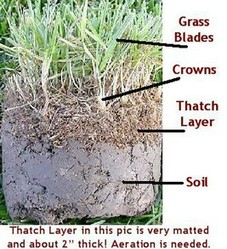

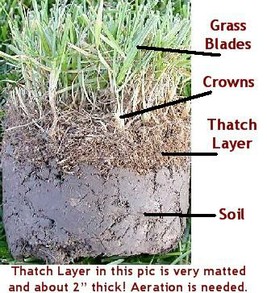




 Apple Watch the Best Talking Watch Bargainon 01/16/2023
Apple Watch the Best Talking Watch Bargainon 01/16/2023
 In-depth review of a Bushcraft Backpacking Survival hatcheton 12/05/2014
In-depth review of a Bushcraft Backpacking Survival hatcheton 12/05/2014
 Winterizing windows – Easy and inexpensive DIY projecton 11/17/2014
Winterizing windows – Easy and inexpensive DIY projecton 11/17/2014
 Growing cucumbers on a trellis is fun and easyon 08/05/2014
Growing cucumbers on a trellis is fun and easyon 08/05/2014

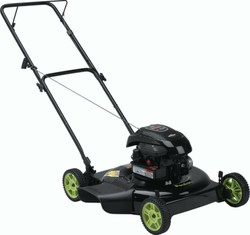
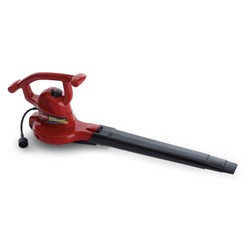
Thanks for sharing your Comments
Lady Guinevere, Debbie granted first establishing, and then keeping a lawn full of beautiful turf grass is a lot of work. That is why the pros charge the big bucks to do the work for us. I know from firsthand experience, dethatching, aerating sewing tons of grass seed and fertilizer is no easy task. However, all the hard work is certainly fun and rewarding for those of us that rather do it ourselves, and pocket the money landscapers charge for their labor.
Congrats, on all the hard work paying off for you, a lawn full of healthy green grass is a beautiful thing.
Thanks for stopping by, be well. Mike
Those sound like a lot of work Mike. If only we had a yard. Our lawn is 1/4 inch of topsoil and the rest is shale and roots. We have work hard to get some grass to grow. It has taken us many years, but we have grass!!! I love your tips though and would use them if I lived in a neighborhood that wasn't on the west die of a wooded/forested mountainside.
Katie I believe once you Learn 7 Basic Steps to a Beautiful Lawn the Professionals use to Make Money. You will have the beautiful lawn you have always dreamed of.
You may want to be a good sport and share these lawn care secrets with all your neighbors.
Thanks and best wishes. Mike
7 basic lawn care steps is awesome, thanks for the great lawn care tips, look out neighbors...